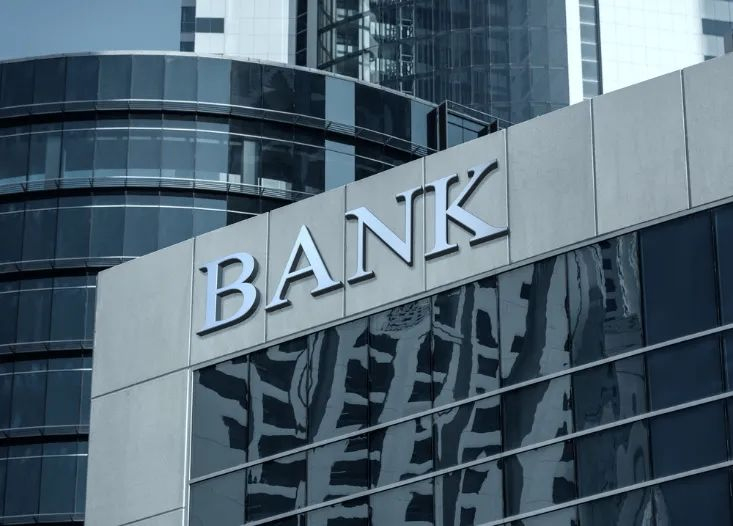After Moody's, Fitch issued another warning or spread to giants such as Xiaomo.
On August 15, Fitch Ratings warned that the U.S. banking industry will face more "pain" in the future, and that the ratings of several U.S. banks, including JPMorgan Chase, could be downgraded if the agency further cuts its assessment of the industry's operating environment.。
On August 15, Fitch Ratings, one of the three leading international rating agencies, warned that the U.S. banking industry will face more "pain" in the future, and that the ratings of several U.S. banks, including JPMorgan Chase, could be downgraded if the agency further cuts its assessment of the industry's operating environment.。
Fitch lowered its assessment of the health of the U.S. banking sector in June.。At that time, Fitch downgraded the "business environment" rating of the U.S. banking industry from AA to AA-, citing continued pressure on the U.S. banking industry since the collapse of Silicon Valley banks, as well as shortcomings in the banking regulatory framework, downward pressure on U.S. credit ratings due to debt problems and uncertainty about the trajectory of future Fed rate hikes.。
At the time, however, Fitch's rating action did not attract much attention because it did not involve rating changes for specific banking institutions.。
But now, Chris Wolfe, an analyst at Fitch, said in an interview that if the industry's rating were to be downgraded by another notch, from AA- to A +, Fitch would have to reassess the ratings of the more than 70 U.S. banks it has rated.。
"If we downgrade it to A +, then we will readjust all of our financial metrics and potentially translate into negative rating action."。This time, he added, Fitch has the intention to signal to the market that a bank downgrade, while not a sure thing, is a real risk.。
Another downgrade of the operating environment will mean that certain banks will be rated higher than their industries, which means that AA-rated banking giants such as JPMorgan Chase and Bank of America may be downgraded by one notch because, in general, companies will not be rated higher than their industries.。
In this case, a downgrade of the industry leader could trigger a reassessment of other banks and could drag smaller banks to non-investment grade status, according to Wolff。
Underpinning this warning from Fitch is the restrictive monetary policy implemented by the Federal Reserve over the past 18 months.。High interest rates have brought high borrowing costs and higher lending standards, creating a high-pressure environment for many banks and non-bank companies with huge debts.。
Against this backdrop, rating agencies have taken downgrades of some U.S. banks。Moody's Ratings, another of the three major international rating agencies, conducted a total of 27 rating operations on a number of U.S. banking institutions (mainly small and medium-sized banks) in early August.。
Among them, Moody's downgraded the credit ratings of 10 U.S. banks, including M & T Bank and BOK Finance.。Meanwhile, Moody's put banks such as Bank of New York Mellon, Northern Trust and US Bancorp on its downgrade watch list.。Moody's also has a negative outlook for 11 banks, including Capital One and Citizens Financial.。
"Deposits at most banks were flat or only slightly down, but the ratio has worsened further, with interest-free deposits falling and banks paying more interest charges on deposits.。Moody's strategists said in a note that "the resulting decline in net interest income and net interest margin erodes profitability, thereby weakening the ability of endogenous replenishment capital."。"
In the wake of Moody's negative rating action, Morgan Stanley analysts said the downgraded banks would have to pay investors more to buy their bonds, further squeezing margins.。They are even concerned that some banks may be completely excluded from the debt market.。A downgrade could also trigger unpopular terms in loan agreements or other complex contracts.。

Bank of America shares came under pressure after Fitch's warning, with several banks falling。On Aug. 15, local time, JPMorgan Chase fell nearly 4 percent; Westpac and Bank of America fell more than 3 percent; Wells Fargo and Citigroup fell more than 2 percent.。
Fitch's risks to the industry are still under observation.。
Asked what factors could cause Fitch to downgrade its rating on the banking sector, Wolff said it would depend on how interest rates change。Wolff said: "What we don't know is where the Fed will stop.?Because this is a very important input for the banking system。"
In addition, he mentioned that Fitch's downgrade was due to the issue of loan defaults faced by banks and whether loan defaults would exceed Fitch's normal level of losses。
Currently, Bank of America reports the highest loan losses in three years。Default rates tend to rise in a rate hike environment, with Fitch expressing concern about the impact of office loan defaults on smaller banks。Many banks are currently dealing with increasing defaults by credit card users and commercial real estate borrowers.。
Quincy Krosby, chief global strategist at LPL Financial, said bank depositors are likely to be concerned about whether rising interest rates will put further pressure on smaller and regional banks.。
In terms of loans, it follows reports that some U.S. banks are making provisions for loan losses。In addition, more than half of U.S. banks are tightening the terms of commercial and industrial loans.。
Once Fitch downgrades, the impact will be widespread and the consequences will be difficult to predict。"This is not inevitable.。Wolff said, "We may also continue to maintain AA-level for the next 10 years."。But if the rating is downgraded, there are consequences。"
·Original
Disclaimer: The views in this article are from the original Creator and do not represent the views or position of Hawk Insight. The content of the article is for reference, communication and learning only, and does not constitute investment advice. If it involves copyright issues, please contact us for deletion.